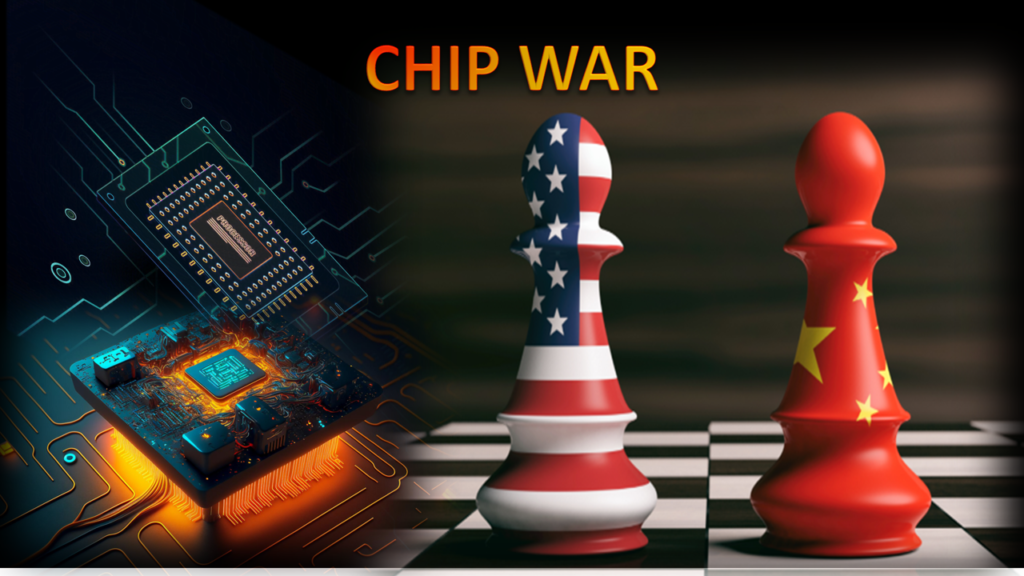Evolution of Maritime Strategy Part – I: There are two major schools of thought in geography and power relationship influencing overall strategy; one relates to continental mindset and the other propagates the maritime mindset. Geoffrey Till highlights four attributes of sea, “the sea as a resource; the sea as a medium of transportation and exchange; the sea as a medium of information and the spread of ideas; and the sea as a medium for dominion”.
While first factor was the start, when knowledge and technology enabled man to become a sea farer, sea has been used for all four purposes and often simultaneously. The study of history of Mediterranean provides a good starting point to understand the influence on evolution of maritime strategy. It is here, where, the fates of empires’ of Greece, Rome, Ottomans, Spain, France and England were decided.
Early Life on Water
An Iraqi herdsman crosses streams on an inflated goat skin; a New Zealand aborigine stays afloat by straddling a bundle of reeds; a Tamil native does his fishing while drifting downstream with a log under his arms to keep him up, and a Sindhi does his while sailing along prone over a wide open-mouthed pot. These, and others, were the ways in which men first took to the water; they went down not to the sea but to lakes and rivers, and not in boats but on anything that would float. Then, from floats they progressed to boats, craft that would not only carry them across water but keep them dry in the process.
Holy Quran in Surah Nuh states, “And build the Ark under Our ˹watchful˺ Eyes and directions, and do not plead with Me for those who have done wrong, for they will surely be drowned”. The simplest explanation that emerges from this is that man was probably taught or given the wisdom of how to build a boat.
By 21st century BC, a Phoenician named Onous is credited with using tree trunk to carry him across water. While in 16th century BC, first long rowing boats carrying fighting men on each side were seen on the Nile. In 1270 BC, Phoenicians used boats for the Trojan War. There was a little change in the first warships to the period of Galleys which sailed in the sea for next 3000 years.
Birth of a Navy
In the year 483 BC, Silver was discovered in the mines of Laurium in Athens. The money generated was used to build a fleet to fight the menace of piracy off Aegina, some 20 miles off Athens and galleys with three banks of oars were made. This was the birth of Athenian Navy which was instrumental in Greece victory off Salamis over Persians in the year 479 BC.
No one can trace the origin of use of sea for trade in the Mediterranean, but the acts of piracy indicate the dependence on sea for trade was much earlier than the arrival of a navy. This also underscores that protection follows growth otherwise growth is hampered, one of the central arguments by Mahan.
Another, force to reckon with in the Mediterranean at the time were, Carthaginians of Carthage, in modern day Tunisia. Carthage replaced Athens as the dominant power in the Mediterranean and enjoyed the supremacy till the arrival of Romans. By 260 B.C. Romans were able to build a fleet of 100 galleys. Duilius, their commander, realized that the roman fleet was no match to experienced Carthaginians, so he invented the Grappling Iron – used to seize the rigging and was then used to drag the ship within reach to board or to attack and also held the planks rigidly once boarding. Romans won their first naval victory against Carthaginians off Mylae on the northern coast of Sicily.
By 31 BC romans had advanced their weaponry and the harpoon, a heavy log beaked with steel and attached to a hawser, shot by catapult deep into the side of enemy ship, extended their reach to target enemy shipping. Mare Nostrum was name given to the Mediterranean by the Romans; at the height of their power it included the entire Mediterranean coast, this phrase embodied not only geography of Roman Empire but also its commerce, political and military strength as well as the role of the sea in various attributes.
Although Tariq Bin Ziyad had first landed at Spain in 711 AD with Spain coming under control of Ummayyads in 712 AD and Muslims continued to maintain some control in Mediterranean, the naval power remained with westerners until 15 Century AD often conflicting amongst each other. By 1426 AD, Ottoman Turks united under Murad II to become a single state.
Ottomans were new to the Mediterranean, but they learnt quickly that amphibious strategy was the best way to take control of the shipping lanes. They also learnt, like many before them, that strategic ports and islands could be used as bases for galley raids on shipping and control of choke points and collect tribute. Economic and especially commercial concerns were an important part of Ottoman strategy as they used their formidable military machine on land and sea to control trade from central Europe and Asia to the eastern Mediterranean as its hub.
In Sultan Mahomet II conquest of Constantinople, navy played an important role. By 1499 in the battle of Sapienza also called the first battle of Lepanto, Ottoman navy defeated Venetians. In 1500 Venice had to oldest and largest navy but her power in the Christian world was eroding with that of Spain rising.
In the year 1415, combined sea and land forces from Portugal captured Ceuta in Morocco. This started the period when Iberian (Spain and Portugal) mariners and merchants explored and traded on West African coast and into the eastern Atlantic. In 1486, a Portuguese named Bartolomeu Dias reached Cape of Good Hope and in 1498 Vasco da Gama reached Calcutta, pioneering a direct sea route to India.
After ten years of war, the so called “Catholic Monarchs”, Isabella of Castile and Ferdinand of Aragon ousted Muslim king of Granada in 1492. These monarchs financed the expedition of Christopher Columbus and many other explorers. Between 1497 and 1510 they had secured a line of strong points from Melilla bordering Morocco to Tripoli in Libya. Both were also inspired by dreams to recapture Jerusalem.
Threatened by Portuguese in the Indian Ocean and Spain in Western Mediterranean, Ottomans reacted and by 1517 had taken over Syria, Palestine and Egypt in addition to attaining of the first of a series in North Africa, client state in Algiers ruled by Muslim corsairs.
From 1520 to 1570 AD, Mediterranean affairs revolved around the gigantic struggle between Spanish Habsburg and Ottomans and all other sides defined their strategies in relation to Habsburg-Ottoman rivalry which was neither consistent nor predictable. Both Ottomans and Spanish understood the importance of holding strategic bases. With rare exceptions, their long engagement did not involve large naval battles, although they could each create a massive battle fleet.
Eastern Mediterranean further came under firm control of Ottomans when they took over Island of Rhodes and ousted the Knights of Saint Jones, known as Knights Hospitaller, whose mission was to wage unending crusades against Muslims. During the course of their rivalry, both empires followed a limited battle fleet strategy.
The idea was to form large fleets in a key area, for offensive and defensive purposes, forcing the enemy to concentrate his fleet as well. The aim was to prevent the enemy’s defensive use of convoys, ability to maintain sea control, so that the client states can continue with piracy a strategy for sea denial. Even when large battle fleets were formed they did not maintain it for long. There were no permanent attempts towards sea control thus only a few large fleet battles took place in sixteenth century with the exception of Perveza in 1538, Djerba in 1560 and Lepanto in 1571.
On many occasions fleets simply withdrew if the objective was untenable. By this time both Ottoman and Spanish states had accumulated enormous debt while being pressed by enemies, Ottomans by Persians and Spain by rebels in Netherlands. In 1577 both sides agreed to a one year truce which was extended to ten years. A series of sieges and naval battles had not itself settled the rivalry in Mediterranean, but their cumulative effect was exhausting and enormously expensive for both sides. This withdrawal of major players created a power vacuum.
Geography and Commerce
Ecological conditions such as soil and rainfall, winds and currents, ports and hinterlands, climate and seasons have remained a challenge for Mediterranean people. The long stretches of Mediterranean coastline are inhospitable to people and ships, yet some are considerably bestowed by nature.
The northern half of Mediterranean is relatively benign, marked by abundant natural ports on main land and islands. Sea farers thus preferred “trunk routes” in the north due favorable weather and abundance of ports and markets. For thousands of years, political and military contest focused on control and access to and from these trunk routes as nearly all the major battles or sieges were fought over key points with majority of naval battles clustered from Sardinia and Corsica eastward i.e. in the waters between Italy and France. It is a clear indication that mastery of location and access mattered in naval warfare since ages.
Everyone knows of Rome’s genius for building roads and organizing land transport. What isn’t so well known is her genius for building merchant fleets and organizing sea transport. In her heyday, the first and second centuries AD, Rome’s merchant marine had more and bigger ships than any had ever had before or were to have afterward for the next fifteen hundred years.
The vessels that handled government cargoes were commonly 340 tons, and those of the crack fleet Rome maintained to haul grain from Alexandria to the capital were no less than twelve hundred tons. An ancient writer, who inspected one of these giants, reported it was all of 180 feet long, forty-five wide, and forty-four deep in the hold. There were perhaps one hundred of them in service at all times; many centuries were to pass before a merchant fleet of this size sailed the seas.
Riggings and Technology
Greeks and Phoenicians were conservative when it came to rigging their warships. Although, archeological discoveries indicate that merchant ships used foresails as far back as 500 BC. Yet even newer types of Galleys carried the same rig that Mediterranean craft had for centuries, a single broad square sail. But this was almost exclusively for cruising. In battle a vessel had to be able to move in any direction in its effort to get into position for a ram attack, so it was impossible, even dangerous, to depend on the wind.
The first recorded reference to sail ship can be found in Julius Caesar’s De Bello Gallico; his accounts of war in Gaul and invasion of southern Britain written in 56 BC, albeit he wasn’t the first Greek to reach there. Pytheas, a Greek mathematician and explorer was the first Greek who sailed from Massilia (Marseilles) around the Iberian Coast up the Channel off Kent. Julius Caesar observed the native sailors and their ships made of oak timber, high brows with sails made of coarse leather. These ships clearly had advantage over galleys in rough seas and gales off English Channel and their high freeboard made use of grapnels and boarding difficult.
Yet Galleys dominated Mediterranean, simply because technology of sail ships at the time made the journey extremely difficult if not impossible and not until the advent of sternpost mounted rudder and full-rigged sail plan in late 13th to 15th century. But that invention was long after the advent of sail ships, yet who invented it first no one knows.
For instance, a Greek historian Theophrastus in his work “Historia Plantarum” writes that southwestern corner of Arabian Peninsula (Al Yamana present day Yemen) was the early home of Sabaeans who established trade monopoly in spices, myrrh and aromata. Pearls from Persian Gulf, condiments, fabrics and swords brought from India, silk from China, slaves, monkeys, ivory, gold and Ostrich feather brought from Ethiopia passed through Yemen on their way in transit to western markets.
The Sabaeans had monopoly over this trade because they knew the routes, reefs and harbours and had mastered the treacherous monsoons and maintained this monopoly until at least first century BC. As the Sabaeans increased the cost of their products and enhanced taxes of transshipments, the situation became problematic for Romans. A Greek or Roman, Hippalus, the Columbus of early Roman trade, was the first westerner to navigate in Indian Ocean. Surely ships under oars alone could not have ventured so far off, especially in rough weather.
In the north, Scandinavians used Drakkars, sailing craft with high bows and shaped like a dragon. Larger ones had two masts and carried square sail; their favorite tactic was to lie in the wait in the small bays at the mouth of rivers to pounce on craft putting to sea, hence their name Viking, from Vik meaning “bay” in Norwegian. Wessex, England was first targeted by them in the year 787 AD.
By 1200 A.D. the Viking ship had put on weight and was on its way to becoming the Cog, the standard one-mast sailing vessel of the north for the next two centuries which now relied principally on the wind, and her oars were for auxiliary use only. She was shortened, her draught and beam increased and, when she went to war, castles were temporarily set up fore and aft, the forecastle to give marines a high platform for raining down missiles, the stern castle to provide shelter for any brass hats aboard.
By the thirteenth century two more all-important improvements had been made. First, after a delay of over several millennia, there was finally invented that simple yet superlatively efficient piece of nautical equipment, the stern rudder. Nobody knows who or even what country deserves the plaudits; all we can say is that it suddenly emerges in the north about this time. As a matter of fact, it or something like it was inevitable now that northern ships were built to sail into the wind.
A vessel tends to heel on such a course; this was no problem to southern craft with a steering oar on each quarter, a possible reason why the rudder never came out of the Mediterranean, but a northern vessel, if pressed down hard enough might find its single oar clear of the water though heeling effect. With the introduction of this new invention, the stern gave up its curve in favor of a vertical post which made hanging a rudder easier.
The second improvement was to convert the castles from temporary additions into permanent parts of the hull. In the course of the twelfth century northern craft occasionally made their way around Spain and into the Mediterranean. In 1189 AD the Third Crusade began and a whole fleet, from both sides of the English Channel, sailed through the Strait of Gibraltar. A century later Cogs were a common enough sight in the ports of southern France and Italy. There they caught the eye of the Mediterranean sailor. He approved of certain significant features and took them over for his own vessels. It was a major step, one that was soon to lead to that queen of the seas, the full-rigged ship.
It was the sailors of the south who got things moving. When they set about improving the northern Cog that they had taken over, one of the first things they did was to put another mast in it at the stern. Later another mast was added; a short stick stepped as far in the bows as possible since its function was to carry a headsail, a small square sail that would keep the vessel’s head off the wind or help lever it over in coming about. The one-master had now become a three-master, the cog had become the Carrack. By year 1500 AD, in the Mediterranean, Carracks weighed up to 1800 Tons.
About the middle of the 15th century AD, another step was taken that completed the basic rig of the square-sailed vessel; a small sail was hung under the bowsprit. It was a simple addition but one that had important consequences. This bowsprit sail now served as headsail, and the foresail was thus released for use as a driver. So the foremast was moved farther back, was made longer since it could be set up more solidly in its new location, and had a larger foresail hung on it with a foretopsail above. The full-rigged ship had come into being.
There were six pieces to its basic suit of sails: bowsprit sail, foresail, and foretopsail, mainsail and maintop sail, mizzen. Five were enough to get Columbus to America (the Santa Maria had no foretopsail); the six brought Da Gama to India and Magellan around the world. With it the western powers gained the means to establish colonies; their extended possessions.
Addition of Fire Power
The next important steps were taken by English, French, and Dutch seamen. Major steps had to be taken, for an important new factor was clamoring for attention i.e. the guns. The earliest references to shipboard use of heavy artillery is derived from Jean Froissart’s chronicle of Hundred Years War mentioning that in the 1340s some Spanish vessels carried iron canon and culverins, a gun capable to fire smaller ball to longer distance.
In 1356 AD the French sent out a fleet with a few guns aboard. Some two decades later, in a sea battle between Genoa and Venice, guns were not only aboard, but saw actual use. The earliest cannon, the “serpentines,” were useless against an enemy’s hull but more effective than arrows, javelins, lime pots and the like against personnel. In 1501 a Frenchman named Decharges got the idea of cutting ports in the hull itself to place cannon on the lower deck. With this the pace of change quickened and cannon meant, finally, the parting of the ways for men-of-war and merchantmen.
Sir John Hawkins, the celebrated privateer and seaman, was made in charge of designing and building Elizabeth’s navy in 1578. He designed a new class of men-of-war, the Galleon. Galleons were so called because they had something of the galley about them; they had some of its slimness and, instead of the bulging forecastle of the Carrack bows, which were now prolonged into a sharp, galley like beak. Instead of two or three decks in solid layers from mast to stern, he made each shorter than the one below; half-deck, quarter-deck and poop so that the vessel’s sides rose aft gradually.
But even more important than hull and rigging was the Galleon’s armament. Efficient brass muzzle-loading cannon replaced the iron breech-loaders that were as likely to damage the gun crew. The Ark Royal, the newest ship, weighing 800 tons, mounted fifty-five, including twenty-four long-range pieces. In July 1588, off Eddystone Rock in the English Channel, the two greatest fleets of sailing warships the world had ever known squared off. On both the English and Spanish sides the big units were a relatively new type of man-of-war the Galleon. By 8 Aug 1588, British Navy defeated the mighty Spanish Armada in the Battle of Gravelines off the coast of France. The next 150 years were to see improvement but not fundamental change in the design of war ships until the arrival of Ship of the Line.
The 16th century Galleon, though it moved well, didn’t maneuver well; there was room for improvement in the rig both fore and aft. So, by about 1650, the Galleon had evolved into a three-mast warship almost completely square-rigged in the biggest versions and mounting up to one hundred guns.
These were called Ship of the Line. But improvement in rig and guns was not the only reason; it also had to do something with tactics. The Dutch, by then a great naval power, introduced a fundamental naval tactic one that lasted up to the atomic age; to sail into battle in a line-ahead formation. And this introduced some order not only into the fighting but into the fighting ships as well. When you fought in a line the ship ahead protected your bow, the ship behind your stern, and your broadside was free to trade blows with the opponents.
So long as an admiral prevented an enemy from taking his line at right angles (breaking through it, or the famous “crossing the T”) and thereby getting a chance to pour murderous broadsides into his vulnerable bows and sterns, victory would go to the side with the heavier guns (or better gunners). This meant that all the ships in the line had to have the strength to trade punches; if a flyweight of twenty guns found itself sailing past a heavyweight of one hundred, the issue was foregone. So there came into being the “ships of the line,” units big enough to take a place on the firing line also termed as Capital ships.
From 1652 to the end of the century, the Dutch and English and French were deep in a three cornered fight for supremacy on the seas. Under the pressure of wartime necessity each side mothered important contributions to the sailing warship. The Dutch contribution, as mentioned earlier, was in seamanship and tactics. As designers of ships they were somewhat restricted by the shallowness of the waters about their home ports. In order to keep down the draught of their vessels, they went in for heavy two-deckers of eighty guns or better; very fine ships in their class. When, toward the end of the century, they tried to squeeze in three decks, the results weren’t nearly as successful.
The masters of ship design were the French. Under the able direction of Louis XIV’s indefatigable lieutenant, Jean Baptiste Colbert, who ran the navy from 1669 to his death in 1683, the French turned out men-of-war so fine that, whenever captured by other navies, particularly the English, they were immediately used as models for improvement in own designs and sometimes converted the French prizes into their flagships.
It was the French who saw clearly that the warship was, in effect, a gun platform and the more stable a gun platform is, the better it is. So they built bigger and broader hulls and cut down the number of cannon. The English, on the other hand, recklessly filled their ships with artillery. To fit in three decks of guns, for example, they were obliged to punch open the bottom ports at a point so low that these were not only useless but a positive danger.
When the weather made up, they could neither be opened nor kept watertight and leakage meant at the very least wet gunpowder. French craft not only kept the lowermost ports much higher above water level but, with their broader beam and sturdier build, were much stiffer; they could bring their broadside to bear when the leeward broadside of a heeled-over English vessel was pointing at water and the windward at sky.
By 1700 England had become masters on the sea as slowly and steadily the continental mindset of mainland European powers left their navies wanting. In order to stay there, English continually took French designs and tried to go them one better. And so, thanks to the French, the various English rates steadily grew bigger while the number of guns they carried either remained the same or grew smaller. All her rivals at the time were formidable at sea in their own right, but they also had to secure their land borders.
Role of Strategy
The mastery of seas was not attained by warship design alone, it had to be fought and British indirect strategy ultimately prevailed. Outcomes in battles of Damme (1213), Sluys (1340), Beachy Head (1690), Barlefeur (May 1692), La Hougue (June 1692), Vigo Bay (1702), Nile (1798), Trafalgar (1805) and Anglo-Dutch Wars from 1652 and ending in 1784 present as series of battles at sea within the larger campaigns against adversary or adversaries either fought alone or with an alliance or switching alliances in next battle, underscoring the permanency of interest rather than friends and foes in international relations.
In most cases the outcomes favored British. Maintaining a navy had its cost and it steadily grew. In 1488 a capital ship cost was £ 2500; by 1588 it had risen on £ 13000. Number of men required to man the ships also steadily enhanced, for instance British Navy had 16000 men in 1588 which rose to 30,000 in 1650 to 45,000 in 1690. Operating cost to maintain a fleet was £ 1.5 Million in 1585 and rose to £ 19 Million by 1690. Yet all rivals were continental powers except England and had to maintain a large army. English strategy relied on continental allies to threaten the enemy on land while maintaining supremacy at sea.
Coming of Steam Engine
The next major change in ships design was influenced by steam engine, propeller screw, iron hulls and turret armament. While experimentation with steam driven vessels propelled by paddles dates back to 1736 and by different individuals in different countries, notably England and USA, it was not until 1807, that a successful design mass produced with up to 20 or more, was first introduced by Robert Fulton, an American, whose The Steamboat with its big side paddle wheels turning steadily, steamed 150 miles up the Hudson river, from New York to Albany, at five miles per hour.
America was a young, big country so mantled with forest that in many areas the only practicable way to travel was by water; Europe had long since lost her forests, ancient Rome had left her a splendid network of roads, stagecoach service was extensive and efficient; in short, steamboats had to offer a lot more than Fulton’s stately five miles per hour to compete. While such design was useful in rivers, sea faring was a different issue.
First, to run the steam engine aboard there was a requirement of coal or wood which also needed stowage space. Second was the inefficiency of the engine itself; it needed considerable coal or wood to operate but power generation rate was smaller as compared to the fuel consumed, making it expensive to operate. Third was the issue of paddle wheels, which were not exposed in calmer river waters, roll and pitch of the high seas, would easily expose them.
The initial response to these challenges was steam ships with sails. In 1819, Moses Rogers an American, sailed from New York and reached Liverpool in 29 days onboard Savannah, a 110- foot full-rigged ship equipped with steam and paddle wheels as auxiliary power. In this voyage, engines were used only for eighty five hours; the rest of the time the big (fifteen-foot diameter) paddle wheels had sat, folded like fans, on the deck. It was enough; however, to convince English shippers that steam power had a place on the high seas.
But England, hub of the world’s maritime commerce at the time, had more than the Atlantic to think about. For her the long run to India was equally important. This involved special problems. If the ships went by way of the Mediterranean and Red Sea, passengers had somehow to be gotten over the Isthmus of Suez. If by way of the Cape of Good Hope, where coaling stations were few and far between, no steamer yet built had the bunkers to carry enough fuel.
Between 1830 and 1840, both obstacles were surmounted. For the former route, an effective caravan service was set up which successfully hauled passengers from Alexandria to Suez. For the latter, England’s shipwrights turned to sailing ships with steam auxiliary. East Indiamen of this period, for example, was given paddle wheels to use when they hit the calmer waters. By 1838, sail became the auxiliary and steam engine became the primary mode. By 1850 steamers were paddling their way all around the world. Yet fares and freight alone could not cover the cost of the vast quantities of coal their inefficient power plants gorged. Hence, companies look for contracting to carry official mail; for which governments paid handsomely.
While merchant marine increasingly adopted the steamers, naval forces were yet reluctant due practical reasons. First, coal or wood stowage requirement meant lesser room for all other things. Second, the exposed engine and paddle wheels gave a simple target for the enemy. Third, a war ship needed to have speed. Again the technological development focused on merchant men provided the answer.
First solution came in the form of efficient steam engines. The engines were the root of the evil; they burned too much coal for the power they produced. The first real breakthrough on this front came in 1856, when a Scotsman named John Elder started putting the compound engine in oceangoing ships. The power plants in use hitherto had always produced more steam than the cylinders needed, and the excess simply went to waste. The compound engine was so designed that the steam one cylinder couldn’t use was passed on to run a second. As a result, fuel consumption dropped dramatically, as much as 50 per cent.
The next major step forward was increasing the steam pressure. About 1860, improvement in boiler making and steam fitting and in the system of condensing the steam raised the ceiling, and with the use of higher pressure, more efficient engines became possible with still further savings in fuel. Secondly, in 1896 newly perfected turbine engines came in use, the simplest and most efficient of all, and dramatically increased speed to thirty five knots. In 1840, five pounds of coal could produce some ten pounds of pressure; seventy years later less than a third that much coal could produce two hundred pounds of pressure and improved turbine design meant the speed had increased 7 times.
Coming of a Propeller
Third important development was the screw propeller. The story of screw propeller dates back to at least seventh century AD. However, in 1775 the hand operated type screw propeller was successfully demonstrated by Robert Bushnell in his one man submarine, the turtle. It took another three decades to produce a practicable screw-driven steamer, and two inventors achieved it almost simultaneously.
Francis Pettit Smith of England patented a screw propeller in May of 1836, and just six weeks later, in June, John Ericsson, who ten years earlier had left Sweden to come to England, patented another. It was the screw propeller that made steam warships possible. The vessel’s vital drive mechanism could now be tucked safely below the water, and its engines tucked safely deep in the hold.
The United States Navy brought John Ericsson from Britain to America in 1839 where he forthwith started work on the first screw-propelled warship, the Princeton, a small but powerful sloop of war. By 1832, US president James Monroe through his annual message to the Congress had already declared that European powers were obligated to respect the Western Hemisphere as the US sphere of interest. Monroe doctrine as it was subsequently called required a capable navy.
Ironclads
Next in line is the production of Iron ships. The iron ships were nothing new. An iron barge had been tried out in England as early as 1787. In 1818 the Vulcan, an all-iron sailing collier was launched. In 1821 the Aaron Manby an iron paddle-wheeler was built at Birmingham and finally, between 1828 and 1834, England’s shipyards started turning out good numbers of iron vessels but all were small, mostly sailing craft for river and lake use. The Great Britain, launched in 1845, was a first all iron ship capable of ocean voyages.
To be continued.
Note: More than 75 references have been used for this article. For use in academic works, please consult Stratanal.com via email.
About the author.







One Response
Normally I do not read article on blogs however I would like to say that this writeup very forced me to try and do so Your writing style has been amazed me Thanks quite great post